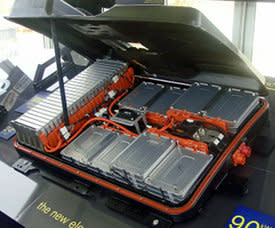About
As the Director of GISS and Principal Investigator for the GISS ModelE Earth System Model, I am interested in understanding past, present and future climate and the impacts of multiple drivers of climate change, including solar irradiance, atmospheric chemistry, aerosols, and greenhouse gases. My specific research interests are outlined in more detail here.

Media and Outreach
Communications:
The Stephan Schneider Keynote Lecture at AGU (2013): What should a climate scientist advocate for? (YouTube video)
I was fortunate to be awarded the Inaugural AGU Climate Communication Prize in 2011. (AGU Press release, NASA press release)
I was also named EarthSky Science Communicator of the year in 2011. (EarthSky release, podcast)
Online resources:
- I gave a TED talk in 2014 on the emergent patterns of climate change.
- "Eating Salad with a Scientist" (YouTube). An illustrated conversation with me about science, advocacy and public communication.
- Comprendre le climat: un enjeux de notre siecle (FR) Presentation at the School of Mines, Albi France (May 2016).
- A talk on Chaos and the Climate at the NY Museum of Math (Oct 2015).
- I have appeared on a couple of recent documentaries by VICE media (HBO) and (mostly in Dutch) André op Aarde(NTR).
- Climate drivers, climate change and climate projections (Webinar) Kansas University Medical Center, Feb 2012
- Promise and Pitfalls of Blogging (YouTube). A chat with Andy Revkin, Pace University, Feb 2012
- What are climate models good for? (video) Dartmouth College, Dept. of Physics Colloquium, Nov 2011
- 19th Annual Kuenhast Lecture (video), University of Minnesota, St. Paul, Oct 13, 2011
- Thompson Lecturer April 2011, Advanced Study Program, NCAR Boulder (video soon)
- The Secret Life of Scientists PBS Nova online. Jan 2010
- Climate Forcings, Climate Models and Climate Change RSE Symposium, New Orleans, Oct 2009.
- The Physics We Know. Video interview for the Edge.org
- The Late Show with David Letterman: May 6 2009
- A new kind of scientist. Commentary on interdisciplinary collaboration (with E. Moyer). Nature Reports Climate Change, Jul 2008.
- The Uncertainty in Climate Modeling, A conversation with Claudia Tebaldi, Leonard Smith and James Murphy. Bulletin of the Atomic Scientists, April 2008.
- The Daily Show with Jon Stewart: April 23 2007
- This week in Science (podcasts). 24 April 2007 and 8 May 2007
- What good are climate models? Friday Colloquium at the Lamont-Doherty Earth Observatory (April 2007)
- How Much, How Soon, How Do We Know? Feb. 2006 Adler Planetarium Global Climate Change Forum
- What's driving climate change? Presentation at the Kavli Frontiers of Science symposium (2005)
- Understanding Katrina - Nov. 2005 Earth Institute Seminar
- Why Worry? The Threat of Abrupt Climate Change - Dec. 2004 eBriefing from the New York Academy of Science.
- Natural and Anthropogenic Drivers of Arctic Climate Change - Oct. 2003 Keynote presentation at SEARCH Open Science Meeting, Seattle.
- La fulgarante ascension de methane - Popular science article for La Recherche (English translation available).
- I am a contributing editor to the website RealClimate.org which tries to provide context and background on climate science issues that are often missing in popular media coverage (not an official NASA blog).















